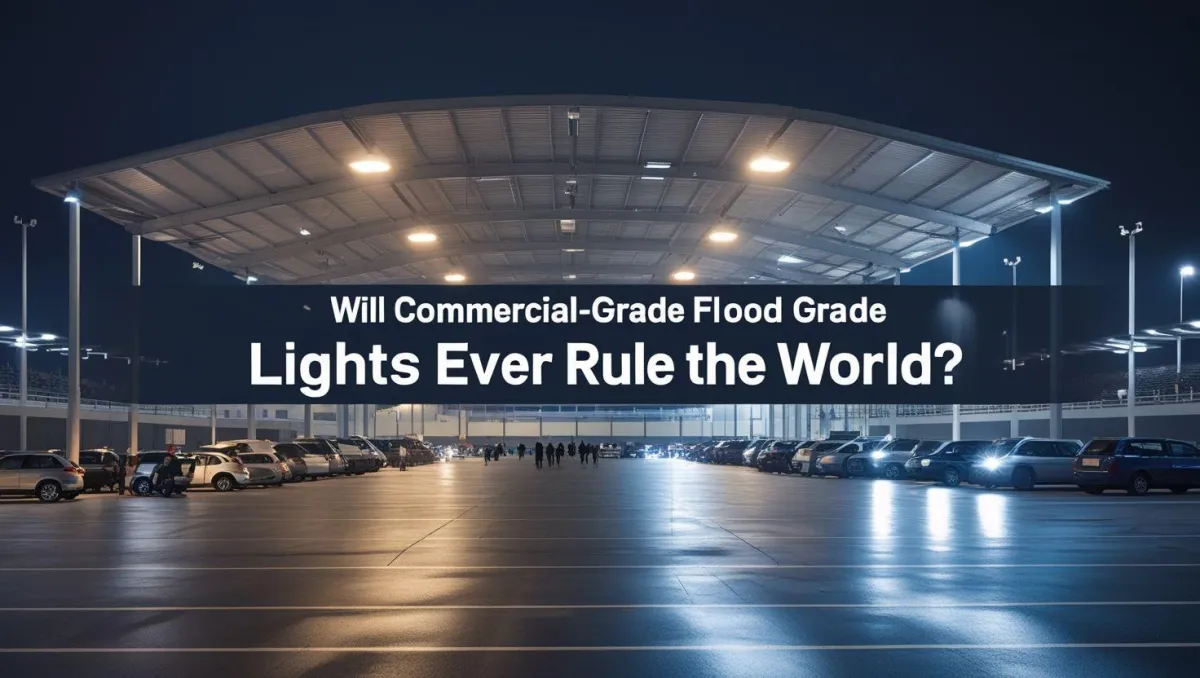
Will Commercial-Grade Flood Lights Ever Rule the World? | Maes Lighting
Commercial-grade flood lights have transformed industries, from enhancing security to illuminating vast spaces with unmatched efficiency. At Maes Lighting, we provide cutting-edge LED flood lights designed for durability, performance, and energy savings. This article explores the potential for commercial-grade flood lights to dominate lighting solutions globally, their real-world applications, and why Maes Lighting leads the way. Discover our commercial LED flood lights collection to power your projects with brilliance.
The Rise of Commercial-Grade Flood Lights
Commercial-grade flood lights, particularly LED-based models, are reshaping how we illuminate large spaces. Their high lumen output, long lifespan, and energy efficiency make them indispensable for warehouses, parking lots, sports arenas, and more. With global demand for sustainable lighting growing, these lights are poised for widespread adoption.
At Maes Lighting, our LED flood lights deliver up to 45,000 lumens and feature IP65 ratings for outdoor resilience. Learn about the global shift toward LED lighting at Energy.gov [Source: web results].
Why LED Flood Lights Are Game-Changers
LED flood lights outperform traditional lighting like metal halide or high-pressure sodium in efficiency and versatility. They offer instant-on functionality, 0-10V dimming, and superior color rendering, making them ideal for diverse applications. Their low heat output and 50,000-hour lifespans reduce maintenance costs significantly.
Our Maes FL-Series Flood Lights provide 140 lumens per watt, ensuring bright, cost-effective illumination. Explore their features to see why they’re a top choice for commercial projects.
Applications Driving Global Impact
Commercial-grade flood lights are critical in multiple sectors, suggesting their potential to “rule the world” of lighting. Below, we highlight key areas where these lights excel and drive innovation.
Industrial and Warehouse Lighting
In industrial settings, flood lights ensure safety and productivity by illuminating large workspaces. Their high output and durability make them perfect for 24/7 operations. Our commercial LED flood lights are UL- and ETL-certified, meeting stringent safety standards.
Security and Outdoor Illumination
Flood lights enhance security for parking lots, perimeters, and public spaces with bright, reliable light. Their weather-resistant designs withstand harsh conditions. For more on lighting’s role in security, visit The International Association of Lighting Designers [Source: web results].
Sports and Entertainment Venues
From stadiums to concert stages, flood lights create vibrant, well-lit environments. Their dimmability allows precise control for dynamic events. Our Maes FLX-Series offers tunable color temperatures for versatile applications.
Challenges to Global Dominance
Despite their advantages, commercial-grade flood lights face hurdles. High upfront costs can deter adoption, though long-term savings offset this. Additionally, improper installation or low-quality products can undermine performance. Maes Lighting addresses these with competitive pricing and rigorous quality control.
For insights into overcoming LED adoption barriers, check The U.S. Department of Energy [Source: web results]. Our 5-year warranties and direct-from-manufacturer model ensure reliability and affordability.
Sustainability and Future Trends
LED flood lights align with global sustainability goals, reducing energy consumption and carbon footprints. Smart lighting integrations, like motion sensors and IoT controls, are shaping the future, enhancing efficiency further. Our flood lights are compatible with smart systems, preparing you for next-gen solutions.
Why Maes Lighting Leads in Commercial Flood Lights
Maes Lighting is a trusted provider of industrial and commercial lighting, offering LED flood lights with IP65 ratings, 50,000-hour lifespans, and UL/ETL certifications. Our direct pricing model and dedicated support make us a top choice for businesses worldwide.
Contact us via our contact page or call +1-866-860-6399 to find the ideal flood light for your needs. For safe installation, follow OSHA’s electrical safety guidelines [Source: web results].
Conclusion: A Bright Future for Flood Lights
Commercial-grade flood lights are revolutionizing illumination with their efficiency, durability, and versatility. While they may not “rule the world,” their impact across industries is undeniable. With Maes Lighting’s advanced solutions, you can harness their power for any project. Explore our LED flood lights collection and light the way to a brighter future.

